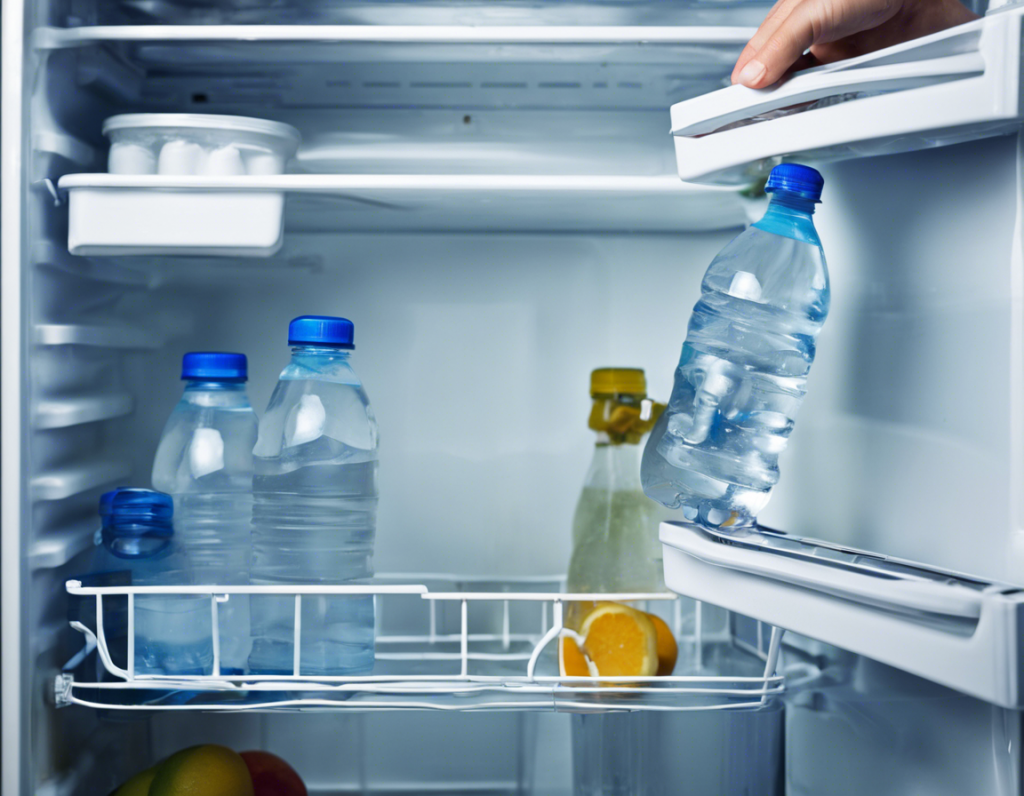Secrets to Crystal Clear Water for Your Home
Understanding the Importance of Crystal Clear Water
Crystal clear water is not just aesthetically pleasing; it plays a crucial role in our health, environment, and daily life. This post delves into why clean water is essential and how we can help maintain it.
Health Benefits of Clear Water
Drinking clear, purified water is vital for overall health. Here are some key benefits:
- Prevents dehydration, improving energy levels.
- Flushes out toxins and supports kidney function.
- Enhances skin health and appearance.
Environmental Impact
Maintaining clear water sources is also essential for our planet:
- Supports aquatic life and biodiversity.
- Ensures safe drinking sources for communities.
- Reduces pollution and promotes natural ecosystems.
Practical Steps to Ensure Water Clarity
To help keep our water clean, consider these practical tips:
- Use eco-friendly cleaning products.
- Avoid littering, especially near water bodies.
- Participate in local clean-up efforts.
By understanding and prioritizing the importance of crystal clear
The Hidden Dangers of Unclean Water
Access to clean water is essential for health and well-being. Unfortunately, unclean water poses numerous hidden dangers that can affect individuals and communities alike.
Health Risks Associated with Contaminated Water
Dirty water can harbor harmful substances, leading to various health issues. Some of the most common risks include:
- Waterborne Diseases: Contaminated water can transmit diseases like cholera and dysentery.
- Heavy Metal Poisoning: Polluted sources may contain dangerous levels of lead and mercury.
- Skin Infections: Washing with dirty water can result in rashes and infections.
Environmental Impact
Unclean water not only affects human health but also damages ecosystems. Key environmental concerns are:
- Aquatic Life: Polluted water can lead to biodiversity loss in rivers and lakes.
- Soil Contamination: Chemicals can leach into soil, affecting crops and plants.
Ultimately, ensuring access to clean water is vital for our health, the environment, and future generations.
Understanding Home Water Systems
A home water system is essential for providing clean, safe water for drinking, cooking, and bathing. But how does it work? Let’s break it down.
Components of a Home Water System
There are several key components that make up a typical home water system:
- Water Source: This may include municipal water supplies or private wells.
- Water Softener: Helps remove minerals that cause hardness.
- Filtration System: Removes impurities and contaminants from the water.
- Pipes and Plumbing: Distributes water throughout the home.
How It Works
The process begins at the water source, where water enters your home. It passes through the filtration system, which ensures that only clean water reaches your taps. A water softener may also treat the water to enhance its quality. Finally, the water travels through pipes and fixtures, providing access wherever needed.
Benefits of a Home Water System
Installing a home water system offers numerous advantages:
- Improved water taste and quality
- Reduced risk of contaminants
- Lowered skin

Key Features to Look for in a Water System
Investing in a water system requires careful consideration of several key features. Understanding these aspects can help ensure the system meets your needs efficiently and effectively.
1. Filtration Quality
A top-tier filtration system is crucial for purifying water. Look for systems with multiple stages of filtration to remove contaminants effectively.
- Activated carbon filters
- Reverse osmosis technology
- UV purification
2. Flow Rate
The flow rate determines how quickly water can be dispensed. Choose a system that suits your daily water consumption needs without lag.
3. Maintenance Requirements
Consider how often the system requires maintenance and the ease of replacement for filters and parts. Systems with low upkeep tend to be more convenient.
4. Energy Efficiency
Save on energy costs by selecting a water system that operates efficiently. Look for ENERGY STAR certified models.
5. Cost and Warranty
Evaluate both the upfront costs and long-term expenses. A good warranty can provide peace of mind for your investment.
By focusing on these key features, you’ll be better equipped to choose a water system that meets your needs
Steps to Installing a Crystal Clear Water System at Home
Installing a crystal clear water system can significantly enhance the quality of water in your home. Follow these steps for a seamless installation process.
Gather Your Materials
Before starting, ensure you have the necessary tools and materials:
- Water filtration system
- Wrenches and screwdrivers
- Teflon tape
- Plastic tubing
- Pipe cutter
Choose the Right Location
Select a spot near your main water line with easy access to power sources, if required. Ensure the area is free from potential hazards.
Turn Off Water Supply
Before installation, turn off your home’s water supply to avoid unwanted leaks. Open a faucet to relieve any pressure.
Follow Installation Instructions
Carefully follow the manufacturer’s installation manual. Typically, this involves:
- Connecting the system to the water line
- Securing the filters
- Testing for leaks
Final Testing and Maintenance
Once installed, turn the water supply back on and check
Top Rated Water Systems for Achieving Crystal Clear Water
Choosing the right water filtration system is crucial for ensuring clean, safe, and crystal clear water. Various options are available, each tailored to meet different needs. Below are some of the top-rated water systems recommended for their effectiveness.
Types of Water Filtration Systems
- Reverse Osmosis Systems: Renowned for eliminating contaminants, these systems can remove up to 99% of dissolved solids.
- Activated Carbon Filters: Perfect for improving taste and odor while reducing chlorine and sediment.
- UV Purification Systems: Effective against bacteria and viruses, utilizing ultraviolet light to sterilize water.
Key Features to Consider
- Filtration Rate: Look for systems with high flow rates that meet your household’s demands.
- Replacement Filters: Check the availability and cost of replacement filters for easy maintenance.
- Space Requirements: Ensure the system fits your available space, whether under the sink or on the countertop.
Investing in a top-rated water system can transform your drinking water experience, providing peace of mind and health benefits. Choose wisely for
The Role of Filters in Maintaining Water Clarity
Filters play a crucial role in ensuring water clarity, whether in aquariums, swimming pools, or natural bodies of water. They remove impurities, suspended particles, and various contaminants that can cloud water, making it an essential component of water maintenance systems.
How Filters Work
Filters function by trapping debris and particles while allowing clean water to flow through. There are several types of filters, each designed for specific needs:
- Mechanical Filters: These physically remove larger particles from the water.
- Chemical Filters: They utilize chemicals to neutralize toxins, improving water quality.
- Biological Filters: These use beneficial bacteria to break down organic waste.
Benefits of Maintaining Water Clarity
Clear water is not just about aesthetics; it also contributes to a healthier environment. Here are some key benefits:
- Improved visibility for aquatic life and recreational activities.
- Reduction of harmful pathogens and algae growth.
- Enhanced filtering efficiency for longer-lasting filters.
In summary, investing in quality filters is essential for maintaining water clarity and promoting a healthier ecosystem, whether for personal
Regular Maintenance for Your Water System
Maintaining your water system is crucial for optimal performance and longevity. Regular maintenance helps to prevent costly repairs, ensures safe drinking water, and enhances system efficiency. Here’s how to effectively manage your water system.
Key Maintenance Tasks
To keep your water system in top shape, consider implementing the following regular maintenance tasks:
- Routine Inspections: Check pipes, valves, and pumps for leaks or signs of wear.
- Water Quality Testing: Test for contaminants regularly to ensure safe drinking water.
- Filter Replacement: Change filters as recommended to maintain water quality.
- Flush the System: Periodically flush out stagnant water to prevent sediment buildup.
Practical Insights
Investing in a maintenance schedule can extend your water system’s life. Simple habits, like keeping outdoor areas clear of debris and recognizing changes in water pressure or taste, can signal issues before they escalate. Engage professionals for complex tasks to ensure everything functions safely and efficiently. Regular maintenance is your key to a healthy water supply!
The Environmental Impact of a Home
Understanding the environmental impact of a home is essential for sustainable living. Our homes significantly contribute to resource consumption and waste generation. By recognizing this footprint, we can make informed choices to mitigate our impact.
Key Areas of Impact
Several factors contribute to a home’s environmental footprint. These include:
- Energy Consumption: Homes account for a large portion of energy use, mainly through heating, cooling, and electricity.
- Water Usage: Excessive water use for indoor plumbing and outdoor landscaping leads to resource depletion.
- Waste Production: Homes generate considerable waste, from food scraps to packaging materials.
Practical Insights for Sustainability
To lessen your home’s environmental impact, consider implementing these practices:
- Energy Efficiency: Invest in energy-efficient appliances and insulation.
- Water Conservation: Use low-flow fixtures and drought-resistant landscaping.
- Waste Reduction: Compost organic waste and recycle materials wherever possible.
By adopting these strategies, you can create a more sustainable home environment, contributing positively to the planet’s health.


Post Comment